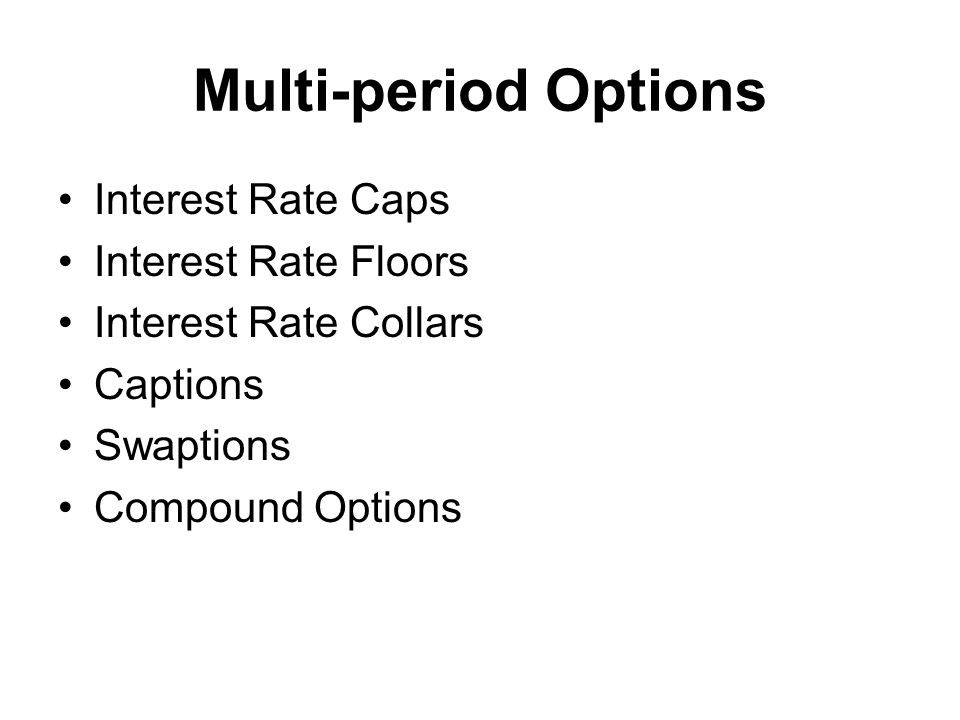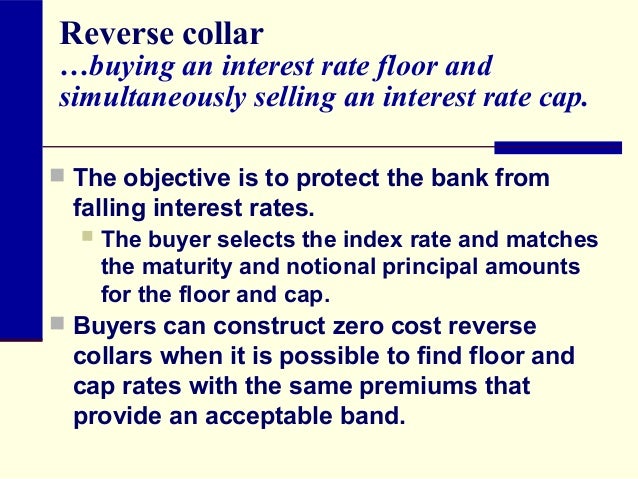This creates an interest rate range and the collar holder is protected from rates above the cap strike rate but has forgone the benefits of interest rates falling below the floor rate sold.
Interest rate caps floors and collars.
Caps floors and collars 13 interest rate collars a collar is a long position in a cap and a short position in a floor.
They are most frequently taken out for periods of between 2 and 5 years although this can vary considerably.
Interest rate swap in hedging variable rate debt with a swap an organization agrees to pay out a fixed amount each month to a counterparty in exchange for receipt of a variable rate.
An interest rate floor is an agreed upon rate in the lower range of rates associated with a floating rate loan product.
The issuer of a floating rate note might use this to cap the upside of his debt service and pay for the cap with a floor.
An interest rate collar can be created by buying a cap and selling a floor.
Or investor may buy a floor to avoid any future falls in the interest rates.
For example as a borrower with current market rates at 6 you would pay more for an interest rate collar with a 4 floor and a 7 cap than a collar with a 5 floor and a 8 5 cap.
This organization has purchased a 5 cap and sold a 2 floor which provides the organization with an interest rate collar of 2 to 5.
The premium for an interest rate collar also depends on the rollover frequency and how you make your premium payments.
A barrower may want to limit the interest rate to avoid any rises in the future and buys a cap.
When the cost of the floor sold equals the cost of the cap purchased it is.
Caps floors and collars are option based interest rate risk management products that put limits to the interest rates.
Interest rate floors are utilized in derivative.







:max_bytes(150000):strip_icc()/strategy-4086857_19201-23485cf7c4bf4dbbb95c93f267285f16.jpg)








